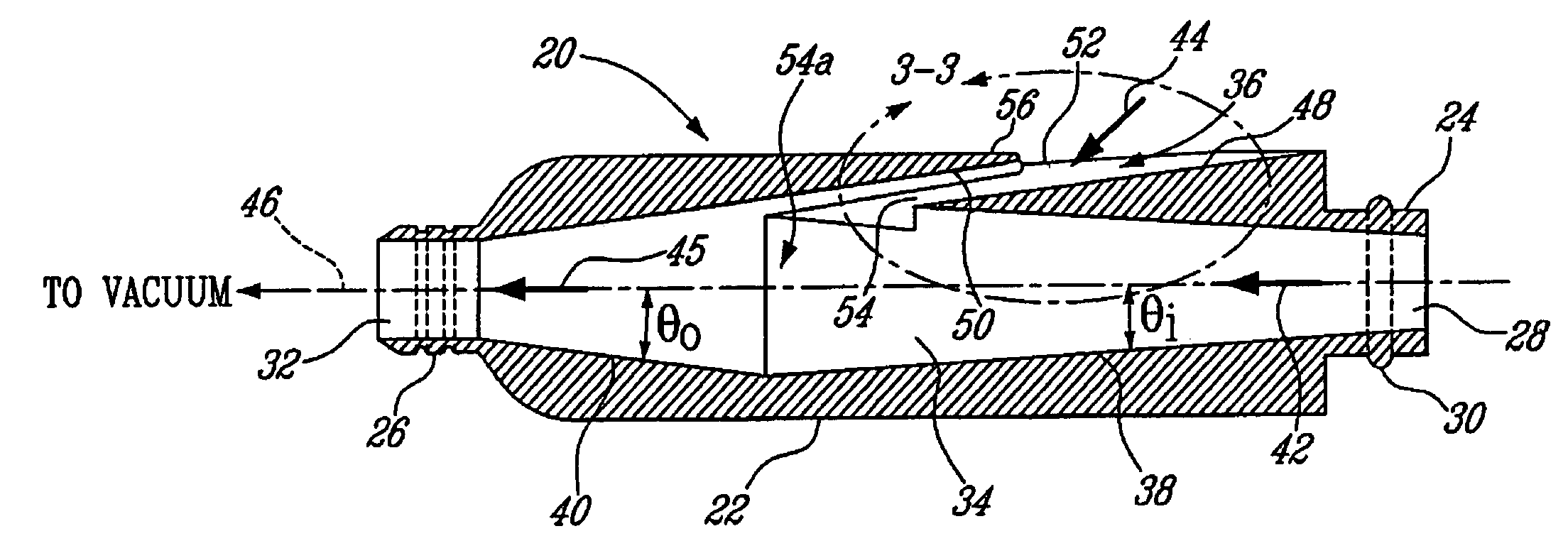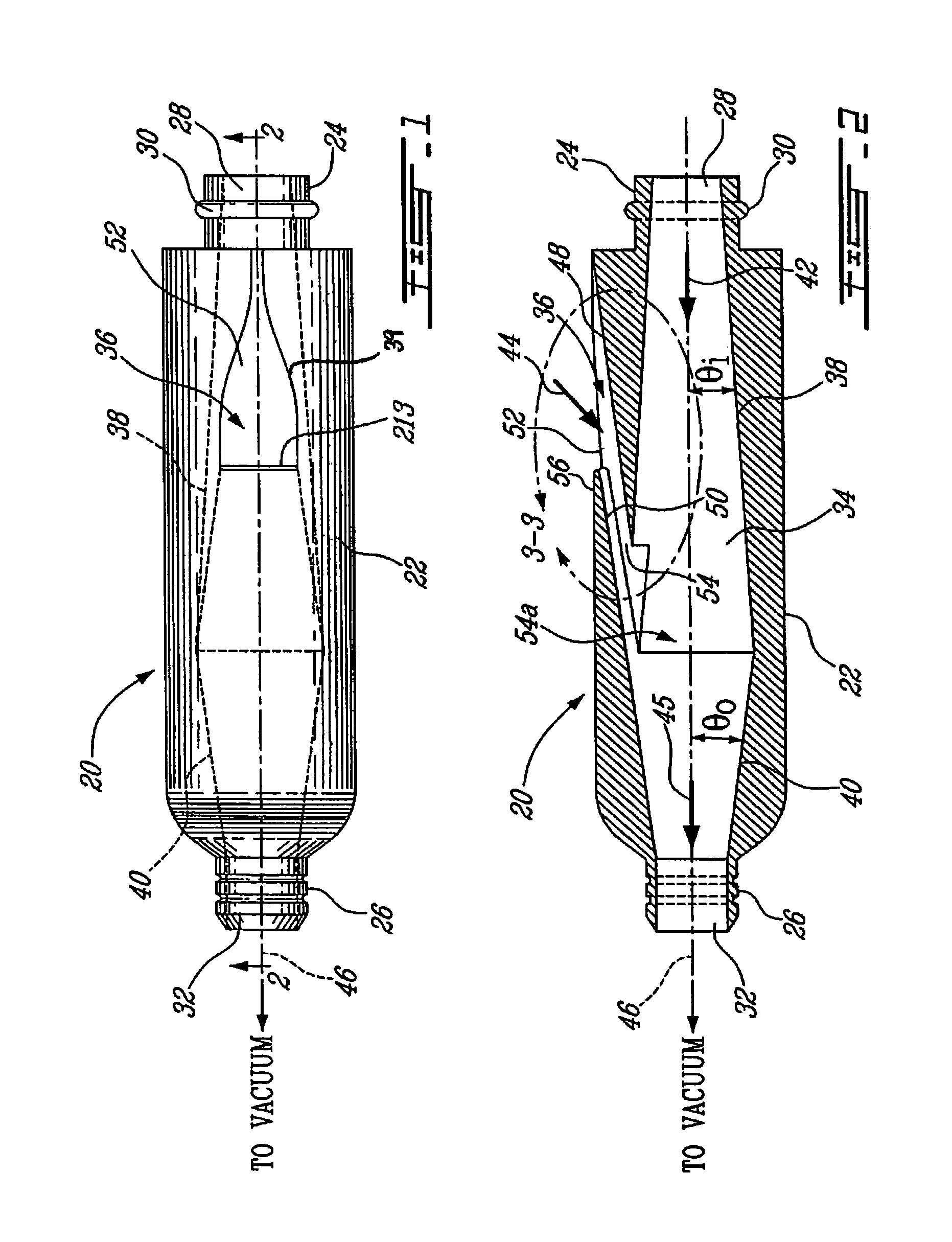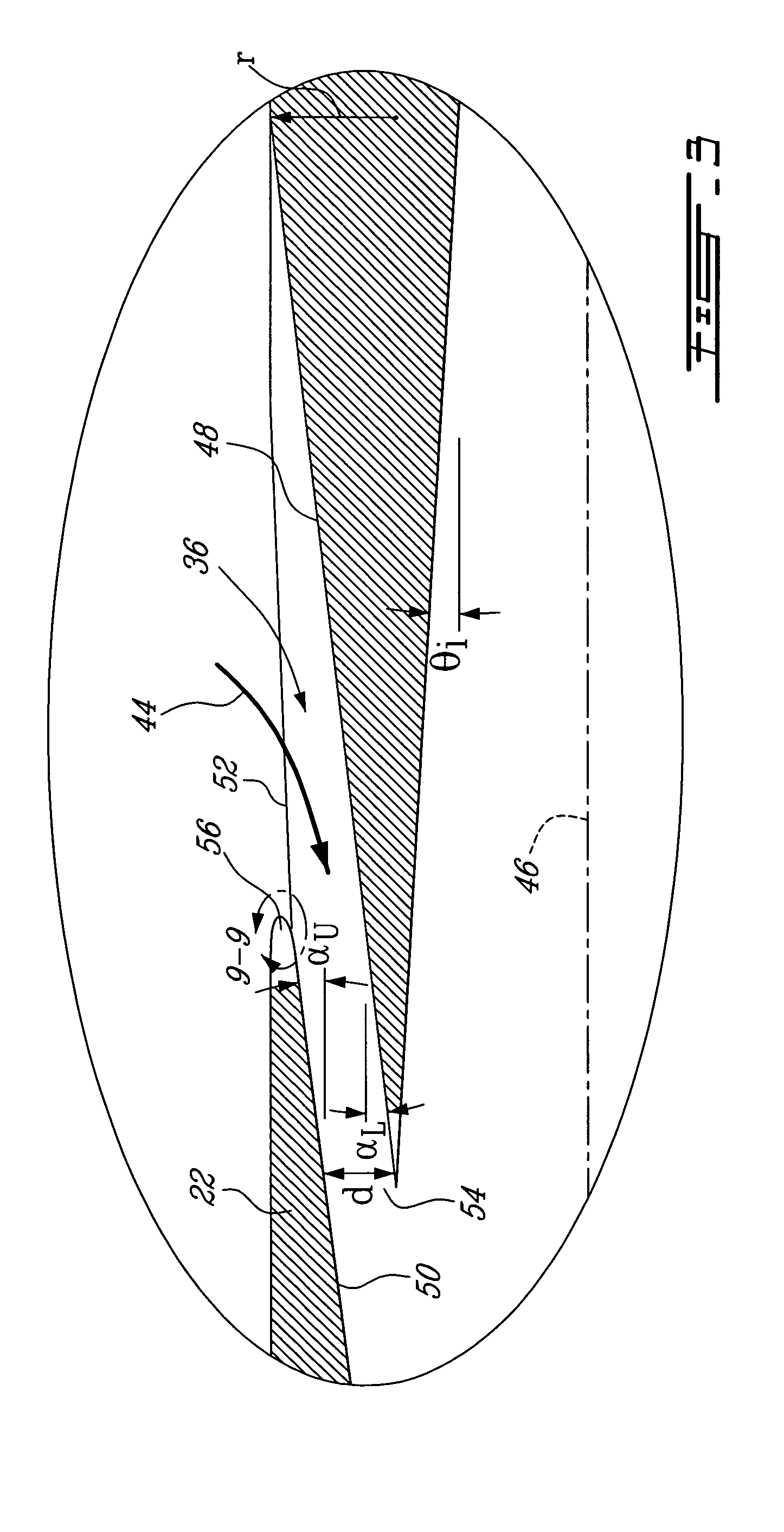Low-noise vacuum release suction device and controllable aspirator using same
a vacuum release and suction device technology, applied in the field of suction devices, can solve the problems of increased risks discomfort and risks of injury for patients, stress both for patients and medical personnel, and hissing nois
- Summary
- Abstract
- Description
- Claims
- Application Information
AI Technical Summary
Benefits of technology
Problems solved by technology
Method used
Image
Examples
Embodiment Construction
[0040]Generally stated, the present invention relates to a vacuum release or suction device 20, as illustrated in FIGS. 1, 2 and 3, for controlling the suction rate in an aspiration line with minimal generated aerodynamic noise. The invention further relates to a hand-held aspirator of the type used for medical purposes, such as for aspirating body fluids from a patient, saliva, water, blood and debris from a patient's mouth during a dental treatment or surgery, for example. The contemplated aspirator may be controllable and is provided with a low noise suction device 20 of the present invention.
[0041]Examples of prior art aspirators having suction capabilities are illustrated in FIGS. 4 to 6.
[0042]The device 20 according to an embodiment of the present invention will be described.
[0043]The device 20 has a body 22 including a first end or main inlet portion 24 and a second end or main outlet portion 26. The main inlet portion 24 has an inlet port 28 which is so configured as to be m...
PUM
 Login to View More
Login to View More Abstract
Description
Claims
Application Information
 Login to View More
Login to View More - R&D
- Intellectual Property
- Life Sciences
- Materials
- Tech Scout
- Unparalleled Data Quality
- Higher Quality Content
- 60% Fewer Hallucinations
Browse by: Latest US Patents, China's latest patents, Technical Efficacy Thesaurus, Application Domain, Technology Topic, Popular Technical Reports.
© 2025 PatSnap. All rights reserved.Legal|Privacy policy|Modern Slavery Act Transparency Statement|Sitemap|About US| Contact US: help@patsnap.com



